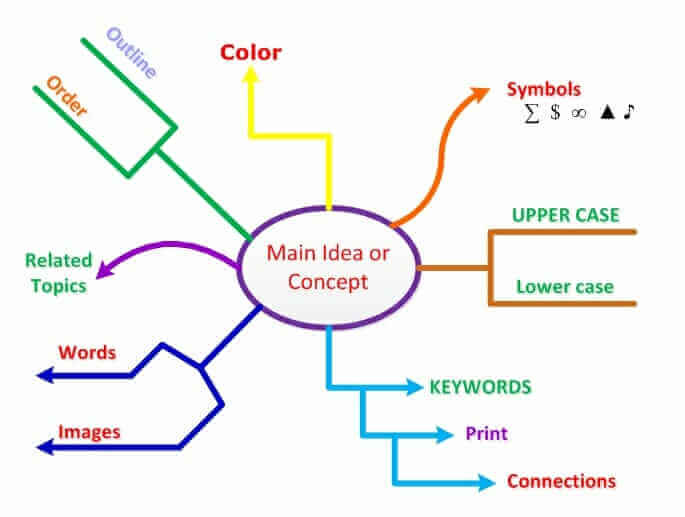Our mind is a powerful tool, always there to help us carry out daily activities normally and adequately. Using mind mapping for concept mapping helps us discover the potential of our mind in order to enhance different types of learning and thinking which are required in schools and universities. But where to start? In order to make a map, you first have to write down the main idea in the center of the page.
The central idea may be a phrase or a word, around which you draw several branches. Those branches represent sub-ideas which have grown out of the central topic. Concept mapping is a useful technique when you need to take notes and present something in the form of a graph. Concept networks are referred to as knowledge maps. Different networks usually consist of links and nodes. Links are the ones representing the relationship between different concepts and nodes are the ones representing the different concepts.
Concepts are sometimes linked with labels. Generally, links and concepts can be categorized in such a way that they can be specified, associated and divided into categories like temporal or even causal relations.
Why Choose Mind Mapping for Concept Mapping?
There are various reasons to start using mind mapping for concept mapping, such as:
- generating numerous ideas like brainstorming;
- designing a more complex idea that would make sense;
- communicating complex ideas;
- assessing one’s understanding and even diagnosing any misunderstandings;
- helping to learn through explicitly integrating old and new knowledge.
What Are the Advantages of Concept Mapping?
Concept mapping triggers the brain to produce more and at the same time making it exercise to be more alert and understanding of the entire concept. Technically speaking, concept mapping can be understood as brainstorming. Brainstorming and mapping can both be regarded as a process leading to new conclusions, viewpoints, and interpretations.
However, the mapping can rely greatly on a random input of intentional sequence. On the other hand, brainstorming is a result of gushes of blood being spilled out of one’s mind and creating out-of-this-world and zany ideas which can be connected to the center point. Brainstorming demands a lateral way of thinking whereas concept mapping provides convergent thinking opportunity to fit the ideas together in one piece of central matter. The moment you get the hang of it, you will be more aware that the technique is actually quite straightforward.
Why do people stick with concept mapping rather than engaging in different kinds of diagrams or outlines? Here are the advantages:
- allowing the person to see all the basic yet important information on just one page;
- clearly defining the main idea and positioning it in the middle represents something quite significant;
- allowing the user to realize that links make sense, which is especially helpful during essay writings and creative output;
- enabling the person to point out the relation of important branching data in a clear manner;
- allowing new “added” information to penetrate without messing up the page or purposely squeezing the ideas in a small space;
- enabling the person to look at a certain situation in several different ways and not portraying an idea locked laterally;
- letting complex relationships among various ideas become more evident;
- allowing the person to see material gaps, contradictions, and even paradoxes in an easier manner;
- encouraging a person’s creativity and the possibility to discover new links.
If you need to deal with big amounts of information on a daily basis or would simply like to finally organize your life, try using mind mapping for concept mapping and you will soon see the results.

